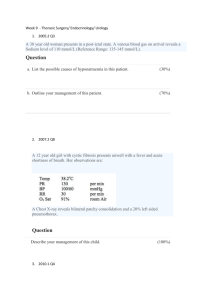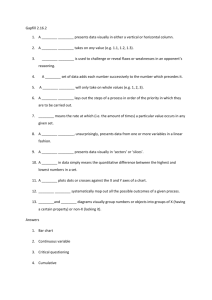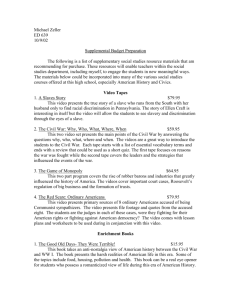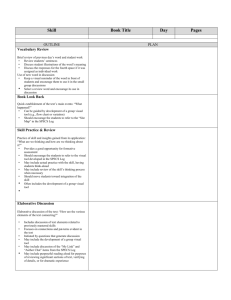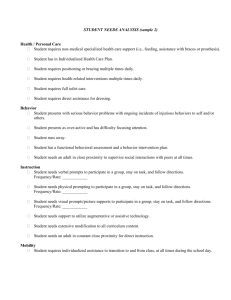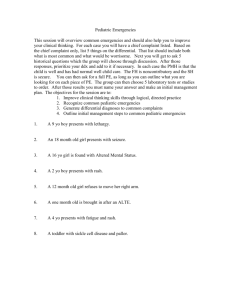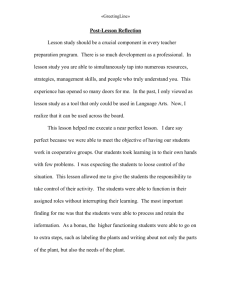New Questions
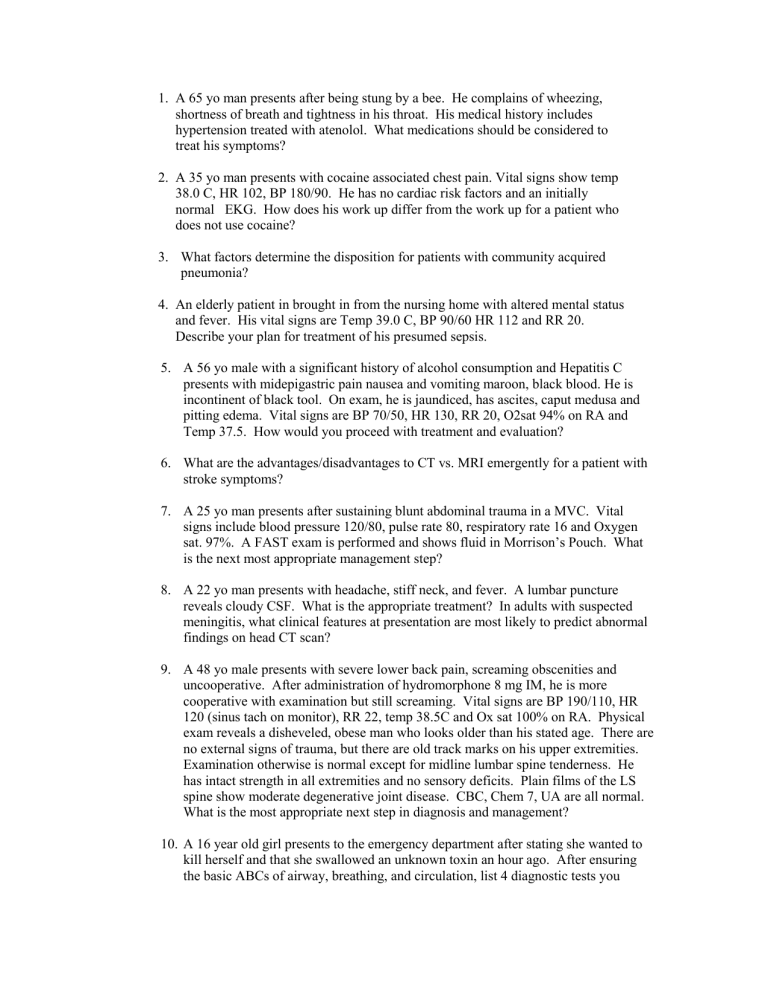
1. A 65 yo man presents after being stung by a bee. He complains of wheezing,
shortness of breath and tightness in his throat. His medical history includes
hypertension treated with atenolol. What medications should be considered to
treat his symptoms?
2. A 35 yo man presents with cocaine associated chest pain. Vital signs show temp
38.0 C, HR 102, BP 180/90. He has no cardiac risk factors and an initially
normal EKG. How does his work up differ from the work up for a patient who
does not use cocaine?
3.
What factors determine the disposition for patients with community acquired pneumonia?
4. An elderly patient in brought in from the nursing home with altered mental status
and fever. His vital signs are Temp 39.0 C, BP 90/60 HR 112 and RR 20.
Describe your plan for treatment of his presumed sepsis.
5.
A 56 yo male with a significant history of alcohol consumption and Hepatitis C presents with midepigastric pain nausea and vomiting maroon, black blood. He is incontinent of black tool. On exam, he is jaundiced, has ascites, caput medusa and pitting edema. Vital signs are BP 70/50, HR 130, RR 20, O2sat 94% on RA and
Temp 37.5. How would you proceed with treatment and evaluation?
6.
What are the advantages/disadvantages to CT vs. MRI emergently for a patient with stroke symptoms?
7.
A 25 yo man presents after sustaining blunt abdominal trauma in a MVC. Vital signs include blood pressure 120/80, pulse rate 80, respiratory rate 16 and Oxygen sat. 97%. A FAST exam is performed and shows fluid in Morrison’s Pouch. What is the next most appropriate management step?
8.
A 22 yo man presents with headache, stiff neck, and fever. A lumbar puncture reveals cloudy CSF. What is the appropriate treatment? In adults with suspected meningitis, what clinical features at presentation are most likely to predict abnormal findings on head CT scan?
9.
A 48 yo male presents with severe lower back pain, screaming obscenities and uncooperative. After administration of hydromorphone 8 mg IM, he is more cooperative with examination but still screaming. Vital signs are BP 190/110, HR
120 (sinus tach on monitor), RR 22, temp 38.5C and Ox sat 100% on RA. Physical exam reveals a disheveled, obese man who looks older than his stated age. There are no external signs of trauma, but there are old track marks on his upper extremities.
Examination otherwise is normal except for midline lumbar spine tenderness. He has intact strength in all extremities and no sensory deficits. Plain films of the LS spine show moderate degenerative joint disease. CBC, Chem 7, UA are all normal.
What is the most appropriate next step in diagnosis and management?
10.
A 16 year old girl presents to the emergency department after stating she wanted to kill herself and that she swallowed an unknown toxin an hour ago. After ensuring the basic ABCs of airway, breathing, and circulation, list 4 diagnostic tests you
would order and what is your next step in treating her? What are the criteria for charcoal use? When might you consider dialysis.
11.
28 yo man presents with second degree, deep partial thickness burns of both arms circumferentially. He weighs 220 lbs. How much lactated ringer’s should be administered over the first 8 hours after the burn?
12. Which symptoms might help differentiate a peritonsillar abscess from epiglottis
from Ludwig’s Angina? How are these treated?
13.
A 20 yo man with Type 1 DM presents with DKA. A venous blood gas shows the pH is 7.09. His chemistries show Na 123, K 4.0, Cl 90, CO2 9, BUN 30, Cr 1.0 and
Glucose 650. Describe your management of this patient and potential complications you might expect.
15. What are the physical exam findings associated with flexor tenosinovitis and
why is this important?
14.
A 58 yo man presents with calf pain after jumping during a game of volleyball. He is experiencing swelling and posterior calf pain. He notices that he is having tingling in his foot which is worse with elevation. His pain is also worse with elevation and with active or passive movement of toes or ankle. He has no plantar flexion with squeeze of his calf. The DP pulse is intact. The calf has a circumference 4 cm larger than the other. What is your diagnosis and what complication must you consider and evaluate?
